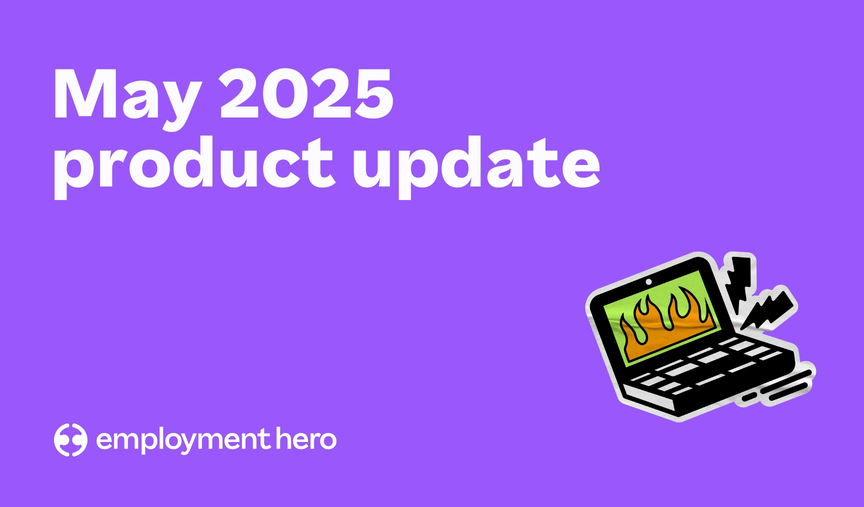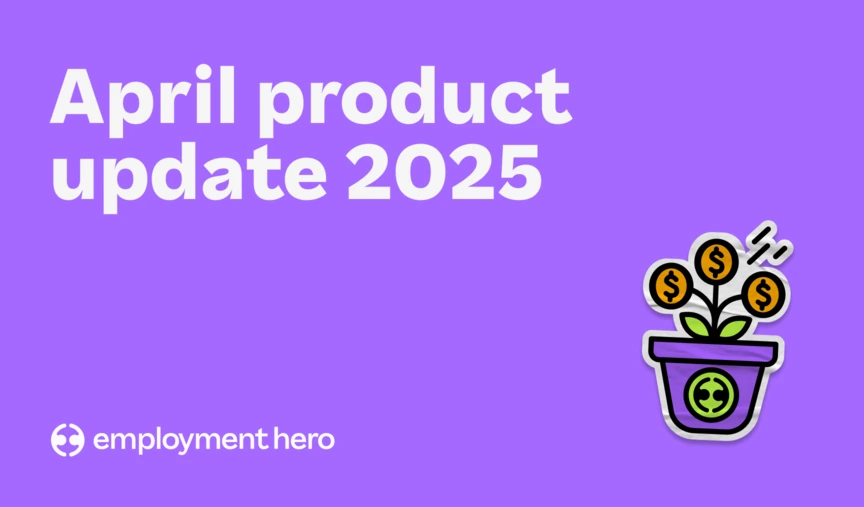Ageism in the workplace: Spotting age discrimination
If we want an inclusive workplace that embraces employees of all ages, it is imperative to understand why ageism occurs, learn how to spot it, and stop it from happening.

Recognise the terms ‘ok boomer’, ‘snowflake generation’ or ‘strawberry generation’? Whether they are said as pointed remarks or throwaway comments, these terms can be hurtful, and show how ageism is a knife that cuts both ways — affecting both the old and young alike.
Ageism, or age discrimination, is seen everywhere in society, and especially in the workplace. With ageing populations, later retirement ages and extended working lives across the world, age diversity in the workplace is at an all-time high. It’s not unusual to find four generations of people working together in organisations — leading to a higher probability of ageism in the workplace.
If we want an inclusive workplace that embraces employees of all ages, it is imperative to understand why ageism occurs, learn how to spot it, and stop it from happening in the workplace.
What is ageism in the workplace?
Coined in 1969 by gerontologist Robert Neil Butler, ageism refers to the discrimination or negative stereotyping of individuals solely based on their age. It can affect any age group, but it predominantly affects those who are:
- Physically young — and hence stereotyped as being inexperienced, lazy, unreliable, less conscientious, less organised, and poorly motivated
- Physically old — and unfairly assumed as being out of touch, forgetful, weak, less adaptable, resistant to change, and having limited competence with technology
Ageism occurs in the workplace when companies and employees have negative stereotypes towards an individual because of their age — perceiving them to be less competent in completing tasks, incapable of assuming leadership roles, or not worthy of training opportunities.
P.S. Check out the movie The Intern, starring Anne Hathaway and Robert De Niro, or The Internship, starring Owen Wilson and Vaughn. Both are great portrayals of how age discrimination occurs in the office!

Is ageism common in the workplace?
It may not be prominent to everyone, but ageism is pervasive and prevalent in the workplace. It is especially concerning in Singapore with a rapidly ageing population, where older workers tend to bear the brunt of age discrimination.
Did you know that one in five (17%) Singaporeans experience age discrimination in their workplace, higher than the APAC average of 12%?
In fact, ageism was found to be the most rampant form of workplace bias in a survey done by the Ministry of Manpower — more than race, gender or nationality bias. The majority of people who felt that they were discriminated against because of their age were in their 40s or older, and these incidents were mostly related to career development, salary-related matters and promotion opportunities.
A study by recruitment firm Randstad on ageism in the workplace also found that 57% of all respondents feel that they have fewer training opportunities as they get older, and that the mean age of career stagnation is 48 years old. There is a prevailing bias that age is a liability, and most workers have a negative outlook on ageing.
Examples of age discrimination in the workplace
Age discrimination against older workers

Ageism can come in many different forms, and research shows older workers tend to be directly affected by age discrimination during the hiring process. Despite years of industry expertise, retraining and government support, many mature professionals, managers and executives (PMEs) are still struggling to find jobs in Singapore, and get questioned about their age in interviews.
Based on a survey conducted by the National Trades Union Congress (NTUC), mature PMEs were less confident about career opportunities compared to their younger counterparts, and half of them said that they had faced some form of discrimination during the job search or at their workplaces.
Apart from struggling to get hired or re-hired, here are some of the other ways older workers experience ageism in the workplace:
- Learning opportunities automatically offered to younger employees
- Being overlooked or passed over for challenging assignments
- Pressured to retire and free up the position for someone younger
- Left out of client meetings or company activities
- Disparaging comments and remarks about age
- Being passed over for raises and promotions
Age discrimination against younger workers
Mention ageism in the workplace, and most people associate it with older workers — plenty of resources address this problem, with employment laws in place to protect the older workforce. But the younger millennial and Gen Z workers (aged 20s to 30s) don’t have such protections.

Also known as ‘reverse ageism’, millennials and Gen Z employees are often seen as being entitled, lazy, coddled, or radical, by older workers who have a ‘kids these days’ attitude.
Terms like ‘snowflake’ and ‘strawberry’ are thrown around when describing the younger generation — insinuating that they are less resilient, cannot withstand the pressures of life, and don’t work as hard as their parents’ generation.
Job-hopping in particular, is frowned upon by the older generation because they believe in ‘iron rice bowl’ jobs that leave you set for life, if you pledge years of loyalty to a company. Whilst some millennials in Singapore agree that they are job-hoppers because of an ever-changing landscape, an overwhelming majority disagrees with all the other negative stereotypes against them.
A study done by the American Psychological Association also showed that younger employees actually experience equal or higher levels of workplace discrimination than older employees — and 60% of office conflicts linked to intergenerational differences are caused by older employees having age stereotypes about their younger co-workers.
The most common ways younger workers are discriminated in the workplace include:
- Limited opportunities to contribute to decision-making
- Opinions not taken into account seriously
- Spoken or unspoken assumptions that you are available to work longer hours because you don’t have young kids to take care of at home
- Disparaging comments and remarks about age
- Overlooked for greater responsibilities and promotions
- Receiving lower pay and benefits
- At higher risk of being laid off during an economic downturn
Experienced age discrimination in the workplace?
Here’s what older employees can do:

Change what has already been internalised
Research done by the World Health Organisation has shown that self-directed ageism has the strongest association with affecting one’s health, and ageist stereotypes in the media have further perpetuated negative impacts on older people’s self-esteem, mental health, physical well-being and cognitive performance.
Internalising ageist stereotypes are harmful — if you believe you are less competent with technology because you’re old, you’ll naturally assume that you can’t learn new digital skills because it’s too difficult, and not even attempt to. Sure, ageing definitely causes memory and processing speeds to deteriorate, but other skills such as comprehension, communication, and reading remain relatively stable.
Ageing isn’t the end of the world — if you focus on the positives and equip yourself with a healthy mindset to always be open to new opportunities and skills, you’ll be surprised at what you can achieve whatever your age!
Focus on constant learning and growth
There’s a whole world of free content out there to help you upgrade or acquire more skills, all you have to do is be willing to learn.
Platforms like Youtube, Udemy, Coursera, and Skillshare have plenty of videos and courses you can check out, along with awesome sites like GetSetUp which is tailored towards the older community. Professionals between the age of 40 and 60 have additional SkillsFuture Credit as well, to enrol in eligible courses and upskill in areas you want to improve on.
There are also programmes such as the SGUnited Mid-Career Pathways Programme, designed to provide support to mid-career individuals aged 40 and above, helping you widen your professional networks and gain industry-relevant skills and experience by being attached to a host organisation.
Agencies such as Workforce Singapore (WSG) and NTUC’s Employment and Employability Institute (e2i) are also available to render employment assistance and career coaching.
Confront the bias head-on
Most older employees encounter ageism while interviewing for a position with hiring managers. If they broach the subject, or if you suspect that age is a concern — address it plainly to squash any doubts they might have.
Assert the fact that you don’t care if your boss is younger than you, you know you may be overqualified for the role but you’re willing to take a step back in order to enjoy better work-life balance, or that you’re confident in using that software. It’s all about transparency, and when you address the discrimination head-on in a tactful way, you’re more likely to get a positive reaction than a negative one.
Know your worth
So much of what older adults bring to the table can’t be measured — it’s all in the form of valuable experience, knowledge, and wisdom that comes from years of working. So don’t ever sell yourself short in your current position, or when searching for a new job!
Challenge the stereotype
Getting called a boomer at work? If you don’t want to be stereotyped as an ageing professional, challenge them actively in the workplace. Rewrite what it means to be part of the older workforce by being adaptive to changes, sharing knowledge, and guiding younger employees.
You’re not adding much value if you constantly talk about “the good old days” where things were different, or use your seniority in age to get away with slacking on projects. It takes two hands to clap — so if you want to be respected and treated equally, you need to be pulling your own weight too.
Hold employers accountable by reporting the situation
Unfortunately, if it’s a situation that constantly happens, it’s best to report them to the human resources (HR) department. Keep a record of all the instances it has happened, along with relevant evidence.
Sometimes your complaint might not even be taken seriously internally, because the HR department ultimately protects the company and not the employees. Monitor how it’s being treated within the company, and if nothing is being done, report it to the Tripartite Alliance for Fair and Progressive Employment Practices (TAFEP). They play an active role in looking into discrimination complaints they’ve received, and refer cases to the MOM for investigation where warranted.
On the flip side, here’s what younger employees can do:

Start or join a group that acts as a safe space
Being discriminated against at the workplace can be both mentally and emotionally exhausting — which is why it’s important to have a community of individuals you can trust and share experiences with. Plus, it’s comforting when you have like-minded young professionals who are going through the same struggles as you.
Regardless of whether you structure them as a Slack channel, a fortnightly Zoom call, or a monthly catch-up in the office, it’s the perfect way to talk about workplace concerns and exchange ideas on how to improve the situation.
[inline-form form-id=15136]
Discuss with your manager
It’s key to make your manager aware of what’s going on — calling it out is the first step towards combating ageism. During your weekly 1:1 check-ins, share your worries and concerns privately so they can help and offer actionable advice.
They could refer you to the HR specialist, helpful resources, or suggest ways to approach the topic within the team so it’s addressed tactfully. If they’ve experienced ageism in the workplace personally before too, they could also be great role models or mentors to guide you.
Address it directly with the instigator
To resolve an issue, it’s helpful to get to the bottom of it and understand what were the intentions and underlying reasons behind it. There’s no harm in approaching the instigator respectfully, and being honest about how disappointed or hurt you felt by their actions or words.
Having an open conversation about workplace ageism and addressing their bias could help in reshaping their views and stereotypes. Be open to opportunities to work together, so you can demonstrate your skills and expertise to debunk their wrongful assumptions.
Be confident in your skills
Ultimately, you were hired because of your personality, skill set, and specialty — so don’t ever doubt that! Your age allows you to have a unique perspective on things, as well as insights and experiences that you can leverage on to your advantage. Capitalise on your knowledge and speak to them at meetings and discussions.
Performance speaks volumes as well — once the older adults clearly see that you’ve been putting in good work, they’ll be less likely to hold assumptions about you based on age.
Break the cycle
As you mature and grow in your career, break the cycle by being the employee you want to work with — give younger professionals the opportunity to prove themselves, trust them to learn and excel at what they’re doing, and be open and ready to help or teach whenever needed.
Are there legal implications for workplace age discrimination?
There sure is! The Ministry of Manpower (MOM) takes age discrimination in the workplace very seriously.
Under the Retirement and Re-employment Act, it is unlawful for employers to dismiss employees who are below 62 years old on grounds of age. Employers are also required to offer re-employment to eligible employees who turn 62, up until they are 67 years old.
In an effort to further stamp out and deter discriminatory hiring practices by employers, changes were also made to the Fair Consideration Framework (FCF) to provide a stronger deterrence against workplace ageism. Five employers were the first to be penalised by the Ministry of Manpower (MOM) for age-related discrimination under the stiffer framework.
Prevent discrimination early by providing policies when employees are onboarded
Workplace policies play a crucial role in embracing a diverse workforce and keeping ageism out of the office. A well-written and clearly communicated policy helps to set clear expectations around expected employee behaviour and workplace procedures. It also helps to foster a safer workplace, providing employees with guidelines on reporting issues to the human resources department should they arise.
It’s important to invest in a good employee management software that allows you to define policies company-wide in a few clicks, make employees acknowledge policies while onboarding, along with a whole bunch of other awesome benefits.
Keen to find out more? Click here to request a demo today.
Building diverse and inclusive workplaces
If you’re looking for more ways that you can combat discrimination at your workplace, download our Diversity and Inclusion HR Handbook.
Fostering diverse and inclusive workplaces opens your business up to invaluable diverse thinking. Diverse and inclusive workplaces can also make a significant impact beyond the office door, creating better professional lives for people from minority groups and driving change in society-wide inequalities.
Learn more by downloading the free handbook now.
[inline-form form-id=1734]
Related Resources
-
 Read more: Product Update: May 2025
Read more: Product Update: May 2025Product Update: May 2025
Follow our May 2025 product update as we share all of the latest and greatest features we’ve released over the…
-
 Read more: Product Update: April 2025
Read more: Product Update: April 2025Product Update: April 2025
Follow our April 2025 product update as we share all of the latest and greatest features we’ve released over the…
-
 Read more: Product Update: March 2025
Read more: Product Update: March 2025Product Update: March 2025
Follow our March 2025 product update as we share all of the latest and greatest features we’ve released over the…









